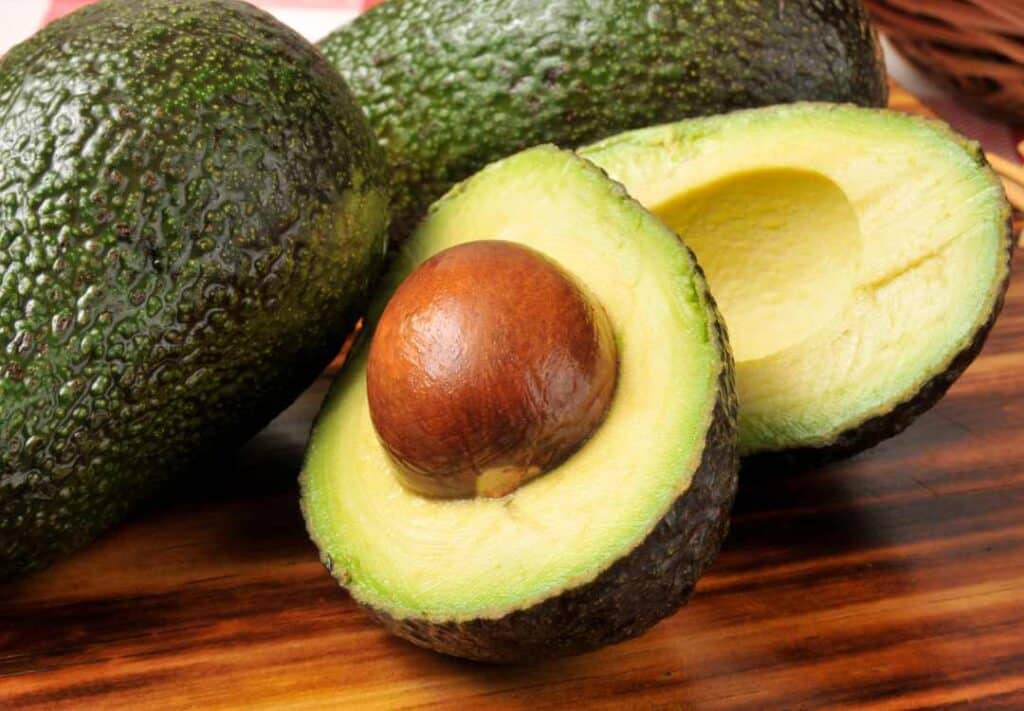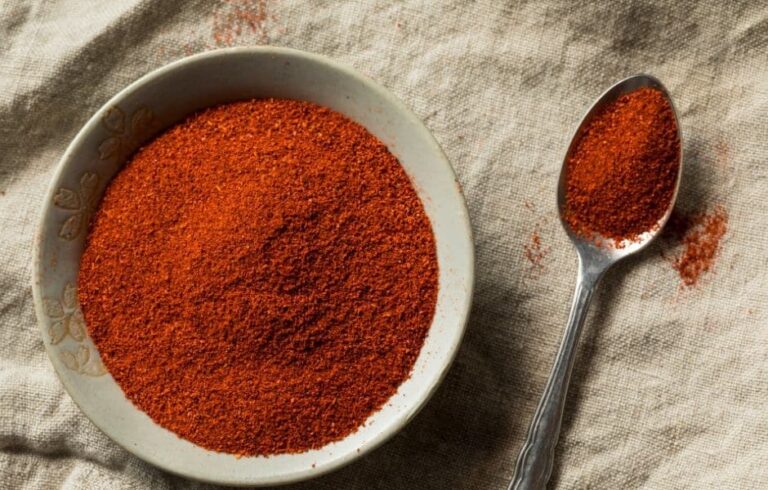Is Avocado a Fruit?
Is avocado a fruit? This seemingly simple question has stirred up plenty of debate, especially among nutritionists and health experts. With its creamy texture, mild flavor, and versatile profile, the avocado stands out on its own as one of the most intriguing foods out there—but it is considered a fruit?

Contents
Is Avocado a Fruit or a Vegetable?
The classification of avocados as either a fruit or a vegetable can be a topic of debate. Some argue that avocados are fruits, while others consider them to be vegetables.
To understand this distinction, it’s important to consider the definitions and characteristics of fruits and vegetables in both botanical and culinary terms.
From a Botanical Perspective, Is Avocado a Fruit or a Vegetable?
From a botanical perspective, an avocado is considered a fruit, more specifically, a berry. In botany, fruits are the mature ovary of a flower, containing the seeds, and avocados fit this definition. They develop from the ovary of the avocado flower and contain a single large seed.
They are considered single-seeded berries and belong to the same family as sassafras, bay laurel, and cinnamon trees. Although they may not resemble typical berries, avocados develop from flowers and contain a large seed in the center. Botanically, they are recognized as fruits.

This classification is based on the botanical definition of a fruit, not on the culinary definition, which often categorizes foods by taste and usage.
What Are Avocados?
Avocados, scientifically known as Persea americana, are a popular food item originating from south-central Mexico. This green-skinned, pear-shaped produce is celebrated for its rich, creamy texture and unique taste.
Avocados are a type of fruit, more specifically classified as a berry, known for their bright green color, large pit, and dark leathery skin. They are also referred to as alligator pears or butter fruit due to their appearance and texture.
The avocado tree (Persea americana), which is part of the laurel family (Lauraceae), is an evergreen tree native to the Americas. The fruits this tree produces are medium-sized and have a unique nutrient profile that sets them apart from most other fruits.

How Do Avocados Taste?
Avocados have a unique taste that is often described as subtly earthy and mildly sweet. Unlike most produce, they’re known for their creamy texture rather than their flavor.
The flesh of an avocado is smooth and buttery, almost melting in your mouth. It’s this richness that makes avocados a popular substitute for butter or cream in many vegan dishes.
The taste is mild enough to blend well with a variety of other flavors, making it a versatile ingredient in cooking. While the taste can slightly vary depending on ripeness and variety, it generally has a nutty undertone.
What Are the Types of Avocados?
Avocados are fleshy fruits that come in different types, including Mexican and Guatemalan avocados.
One well-known variety is the Hass avocado, which is popular worldwide for its creamy texture and rich taste.
When it comes to eating avocados, it is essential to choose a ripe avocado for the best flavor and texture. Ripe avocados are typically dark green or purplish-black and yield slightly to gentle pressure when squeezed.
Mexican avocados are larger in size and have a smooth, shiny, and green skin, while Guatemalan avocados are smaller with a pebbly skin.

From a Culinary Perspective, How Is Avocado Treated?
In culinary terms, the classification of avocados can vary. Culinary practices often categorize food items based on their taste and usage rather than their botanical classification.
Avocados are typically treated as vegetables in savory dishes and are commonly used in salads, sandwiches, and guacamole. They have a mild flavor and a creamy, smooth texture, which makes them suitable for various culinary applications.

The United States Department of Agriculture (USDA) classifies avocados as vegetables for the purpose of nutrition labeling and categorization. This is because they are commonly used in savory dishes and are not typically consumed as a sweet or dessert-like fruit.
Ultimately, whether avocados are considered fruits or vegetables from a culinary perspective can depend on the cultural and regional context, as well as personal interpretation.
It’s important to note that the botanical classification and culinary classification may not always align, and the usage of avocados in different culinary contexts can vary.
Is It True That Avocados Are Technically Berries?
Avocados are technically considered berries because they meet the botanical definition of fleshy fruits that develop from a single ovary of a flower, containing seeds.
Despite our usual association of berries with small, sweet fruits, avocados fall under this category due to their single-seeded development from the flowering avocado tree.
This botanical classification includes a broader range of fruits, and understanding it helps us appreciate the diversity of fruits we enjoy in various culinary dishes.
What Are the Health Benefits of Avocados?
Avocados offer various health benefits due to their rich nutritional profile, including:
- Essential nutrients
- Heart health support
- Weight management
- Blood sugar control
- Eye Health
- Digestive Health
- Skin benefits
- Anti-inflammatory properties
- Nutrient absorption
- Brain Health
Incorporating avocados into a balanced diet can provide numerous advantages for overall well-being.
How Can You Incorporate Avocados Into Your Diet?
Enjoy the nutty flavor of avocados, a fleshy fruit classified as a botanical fruit, in various creative ways. Avocados can be eaten raw, and they provide a plentiful supply of healthy fats, fiber, vitamins, and minerals, contributing to overall well-being. You can eat avocado by adding it to your meals in the following creative ways:
Avocado Toast
Mash ripe avocado onto whole-grain toast and add a sprinkle of salt, pepper, and your favorite toppings, such as cherry tomatoes, feta cheese, or a drizzle of balsamic glaze.
Guacamole
Prepare a classic guacamole by mashing avocados and mixing them with diced tomatoes, onions, lime juice, cilantro, salt, and pepper. Enjoy it as a dip by pairing it with some tortilla chips or as a topping for tacos and quesadillas.
Avocado Smoothies
Blend ripe avocado with fruits like bananas, berries, and spinach, along with some yogurt or almond milk for a creamy and nutritious smoothie.
Avocado Fruit Salad
Slice avocados and combine them with mixed greens, cucumbers, bell peppers, and a light vinaigrette dressing. To make your meal more filling, you have the option to add grilled chicken or shrimp.
Stuffed Avocado
Cut an avocado in half and remove the pit, then fill the center with ingredients like quinoa salad, black bean salsa, or tuna salad for a quick and nutritious lunch.
Avocado Egg Boat
Create a “boat” in the center of a medium avocado half by scooping out a bit of flesh. Crack an egg into the hollow, season it, and bake until the egg is cooked to your preference.
Avocado Dressing
Make a creamy avocado dressing by blending half an avocado with lime juice, Greek yogurt, garlic, and your favorite herbs. Drizzle it over salads or use it as a dip for vegetable sticks.
Avocado as a Healthy Fat Substitute
Use mashed avocado instead of butter or mayonnaise in sandwiches, wraps, tacos or as a spread on burgers.
Avocado Pasta Sauce
Blend avocado with basil, garlic, olive oil, a pinch of salt, and lemon juice to make a creamy pasta sauce. Mix it together with your preferred cooked pasta for a healthy and satisfying meal.
Avocado Sushi Rolls
Add avocado slices to your homemade sushi rolls for a creamy texture and delicious flavor. Enjoy the versatility and nutritional benefits of avocados in your daily meals!

So, to Clarify, Is Avocado a Fruit or a Vegetable?
In conclusion, from a botanical perspective, an avocado is considered a fruit. Botanical fruits are defined as mature ovaries of flowering plants that contain seeds, and avocados fit this criterion as they develop from the fertilized ovule of the avocado tree.
Despite this classification, in everyday culinary language, avocados are often treated as vegetables due to their savory applications and use in salads, sandwiches, and other non-sweet dishes.
However, from a botanical standpoint, avocados fall firmly into the category of fruits, specifically single-seeded berries, given their fleshy nature and the presence of a single seed within the fruit.
Regardless of how they are perceived in the kitchen, understanding their botanical identity helps appreciate the diverse and fascinating world of fruits and their contribution to both culinary delights and health benefits.






